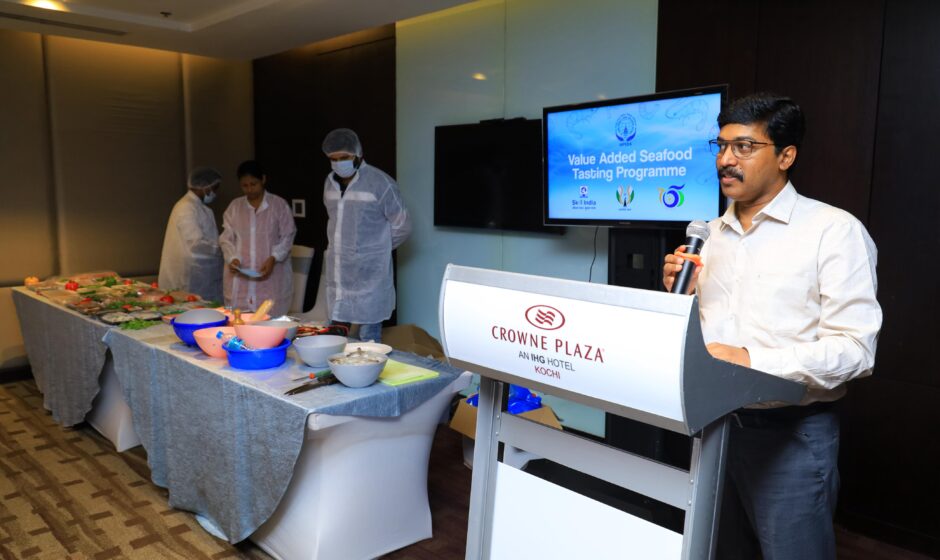India’s Marine Products Exports Development Authority (MPEDA) is embarking on an ambitious plan to double the country’s value-added seafood production, targeting a 20 percent increase by 2030. Recognizing the heightened demand for value-added seafood in key markets such as the U.S., E.U., Japan, and Asia, MPEDA Chairman D V Swamy emphasizes the potential for higher profits in this sector.
In the most recent fiscal year, India’s seafood exports reached USD 8.09 billion, with value-added products contributing 10 percent, approximately USD 860 million. Despite being the world’s third-largest fish producer, second-largest aquaculture producer, and fourth-largest seafood exporter, India seeks to enhance its global market share in value-added seafood, currently holding 2.5 percent of the USD 34 billion global market.
To achieve this goal, MPEDA has initiated a comprehensive development plan, including capacity-building initiatives, worker training programs, and advocacy for reduced bureaucracy and transition costs in the industry. The authority recently conducted its first training session with Vietnamese seafood processing experts, providing insights to 22 Indian seafood companies on implementing value-added processes.
To expedite the transition, Indian exporters have urged MPEDA to advocate for the removal of tariffs on crucial components of value-added seafood processing, such as breadcrumbs, sauces, pre-dust, coconut shavings, and plastic trays. Additionally, they seek an increase in India’s import duty exemption from 1 percent to 3 percent of the freight on board (FOB) value for value-added exports.
Despite challenges like lower seafood prices and political turbulence in the U.S., India remains optimistic about its seafood industry. Swamy reports a 6 percent increase in seafood exports by volume in the current fiscal year, with the government’s support evident through programs like India’s Blue Revolution and the Pradhan Mantri Matsya Sampada Yojana (PMMSY).
At the Global Fisheries Conference, Minister of State for Fisheries, Animal Husbandry, and Dairying L Murugan affirmed the government’s commitment to supporting the industry’s transition from near-shore to deep-sea fishing. Financial assistance of up to 60 percent for converting fishing boats, low- or no-interest loans, and encouragement for technological advancements highlight India’s strategy to tap into the global demand for tuna. Murugan stressed the need for research and design to upgrade fishing vessels, making deep-sea fishing both efficient and sustainable.
World Bank Consultant Arthur Neiland estimates that India is utilizing only 12 percent of the tuna in its exclusive economic zone, with the potential for sustainable yields of around 179,000 metric tons annually. Murugan’s call for increased collaboration, innovation, and the involvement of startups signals India’s intent to further harness its vast deep-sea fishing potential.


